We include products in articles we think are useful for our readers. If you buy products or services through links on our website, we may earn a small commission.
Why Are Grains Bad for You & List of Grains to Avoid

If you’re like most people, when you think of grains, you picture the foundation of the government food pyramid. So you might be wondering why and how grains are bad for you.
Government authority when it comes to food recommendations is a non-scientific, political, economic, and ultimately a national health travesty.
The preponderance of actual science tells us that consuming grains can lead to numerous diseases and disorders, including:
- Overgrowth of bad gut bacteria–SIBO
- Exposure to anti-nutrients that inhibit the absorption of vital nutrients
- Tooth decay
- Obesity
- Hormonal imbalances
- Exposure to toxic molds (mycotoxins)
- Unstable mood
- Heart disease
- Inflammation
In this article, we’ll take a deeper science-backed dive into just how grains are bad for you, and provide a list of grains to avoid.
Table of Contents
The Catastrophe of Grain-Based Agriculture
The first place to look when trying to understand why grains are bad for you is our historical record.
Grains are a new addition to the human diet dating back around 10,000 years.
Research shows that before humans learned how to domesticate (or became domesticated by!) grains, our ancestors ate a diet of almost exclusively animal meat for nearly 2 million years of evolution.
This dramatic and recent switch from fatty meats to sugary grains resulted in discord between our core metabolic processes that evolved over eons and the foods we eat.
So just what did this dramatic change from nutrient-dense meats to domesticated grasses do to our species?
Pitfalls of the Agricultural Revolution
Subsisting on the same grain, i.e., carbohydrates, day in and day out, lead to a huge uptick in cavities and periodontal disease that we don’t find in hunter-gatherers. Tending to crops all day was more laborious and time-consuming than hunting and foraging.
The surplus of consistent calories from grain caused people to settle in one place and populations to boom. When disease struck or a crop failed, huge portions of the population were afflicted.
Grains Shrunk our Bodies and Made us Sick
Suffering from iron, fat, and protein deficiencies, people shrunk, both in terms of their brain size and physical stature.
Looking at human fossil evidence, Cambridge Professor Dr. Marta Lahr found that human body weight and brain size stayed relatively consistent for 200,000 years, with the largest Homo sapiens living from 20,000 to 30,000 years ago.
Their average weight was between 176 and 188 pounds, with a brain size of 1,500 cubic centimeters. Then around 10,000 years ago, human brains and bodies got smaller to where we are today. The average human weight is between 154 and 176 pounds, with a brain size of 1,350 cubic centimeters.
Fast Forward to Now: The Diseases of Civilization
Today we see the sad legacy of our dependence on grain-based agriculture. It’s ensconced in the misconceived recommendations of the mainstream medical establishment. And it’s trumpeted by so-called food gurus like Michael Pollan, whose infamous statement, “Eat food. Not too much. Mostly plants,” encompasses so much that’s wrong with the way we eat.
A scientifically founded and literally life-saving rallying cry echoes those of the vast majority of our human ancestors: Eat meat. Not too little. Mostly Fat!
We know that 60 percent of the calories we eat come from processed foods that are high in sugar, grains, and vegetable oils. Conventional nutritional guidelines tell us to eat three meals a day with snacks in between, most of it based on grains.
We know that plant-based foods, e.g., grains and vegetable oils are at the core of the Standard American Diet. And we know that the Standard American diet is responsible for the “diseases of civilization,” including :
- heart disease
- hypertension
- type 2 diabetes
- IBS
- Osteoperosisepithelial cell cancers
- inflammatory diseases (including autoimmune diseases, bowel disorders, osteoporosis, infertility, dementia, and Alzheimers)
These are called ‘the diseases of civilization’ because they are virtually non-existent in traditional societies that eat a whole foods diet based around animal products.
Each of these diseases has metabolic disorders and chronic inflammation at its root.
The truth is that our genes and physiology, which are almost identical to those of our hunter-gatherer ancestors, preserve core metabolic processes that are optimized by a high-fat, high-meat diet.
Yet nowadays, our genes operate in internal and external environments that are completely different from those we were designed for. We eat junk, we stress out, we don’t move. So we get sick. And it’s only projected to get worse.
Cutting out grains is one of the most effective steps you can take in reclaiming your health and well-being!
There is Absolutely No Good Reason to Eat Grains
The only reason someone should conceivably eat grains is if they are literally starving and don’t have access to alternative calorie sources.
Now, let’s look at all the reasons not to eat grains
Antinutrients in Grains
Grains are high in compounds known as antinutrients that interfere with digestion and absorption of nutrients and can even harm our bodies.
Grains require intensive processing to reduce antinutrients enough so that we can digest them.
Phytic acid in Grains
Phytic acid (or phytate) reduces the absorption of iron, zinc, magnesium, copper, and calcium.
Phytate can also prevent digestive enzymes from breaking down proteins and starches into digestible nutrients.
Phytic acid is highest in the husk and bran of cereal grains. Unrefined grains have the highest amount of phytic acid because they contain the entire grain — the husk, bran, and endosperm. Those “healthy” whole grains are just higher in phytic acid and harder to digest. Their increased fiber is also problematic–a point we get to below.
Maize germ, wheat bran, and rice bran have up to 6.39, 7.3, and 8.7 grams of phytic acid per 100 grams, respectively.
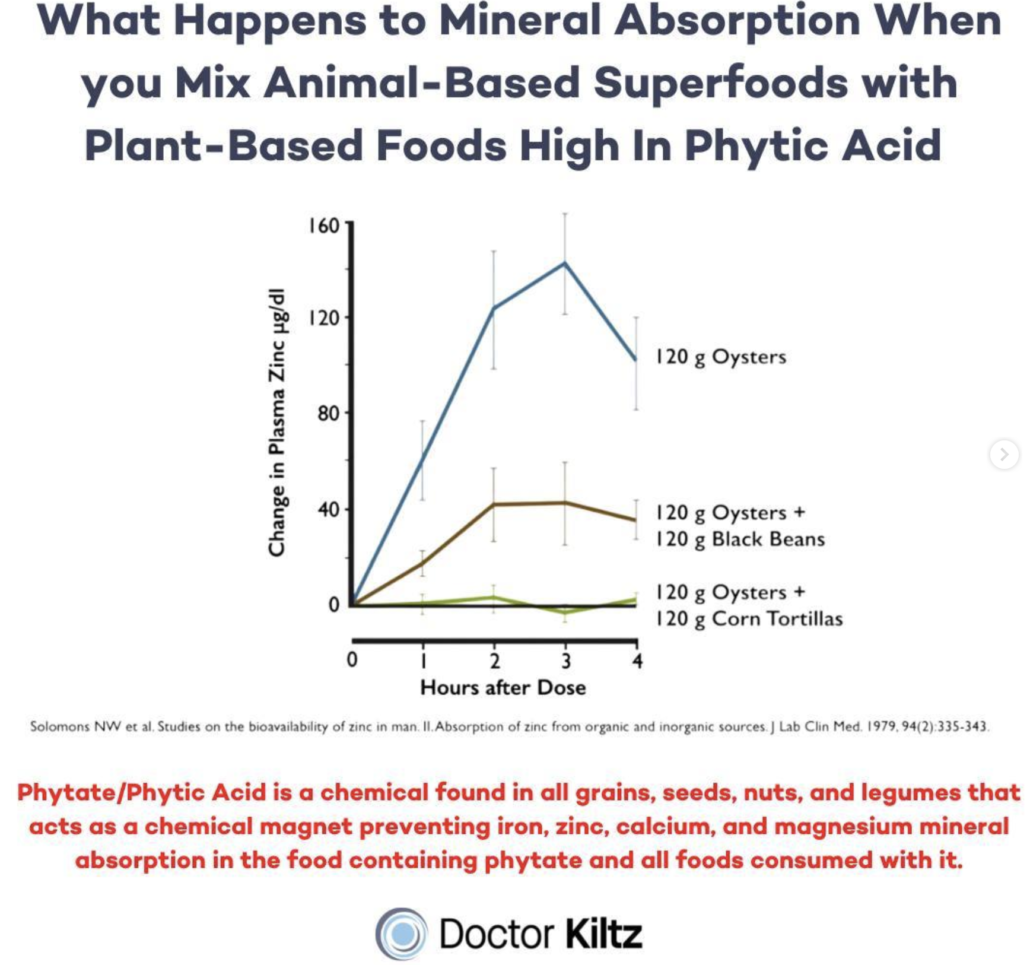
Lectins in Grains
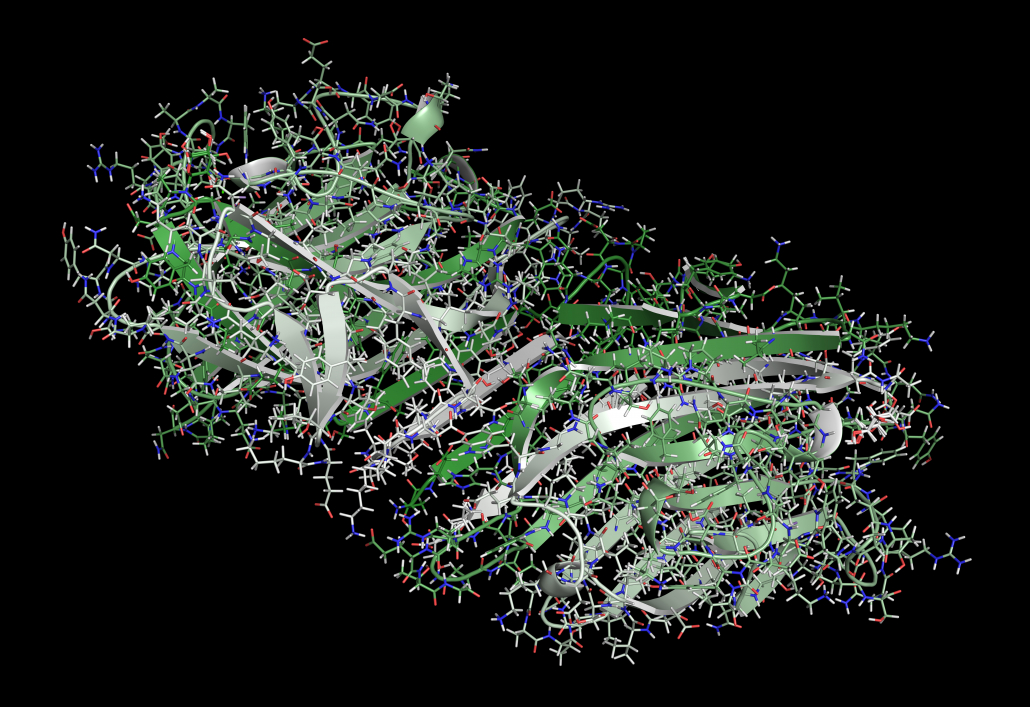
Another common antinutrient in grains are lectins.
In plants, these sticky proteins defend against pests. But when we eat them, can cause digestive issues and inhibit our ability to absorb important nutrients, including zinc, iron, and calcium.
Lectins are an active compound in most inflammatory plant foods. Studies show that lectins increase inflammation associated with IBS and autoimmune conditions like rheumatoid arthritis.
Some researchers identify lectins in grains as the link between agrarian grain-based diets and “disease of affluence,” AKA “diseases of civilization” mentioned above.
This 2005 study cites lectins in cereal grains as the culprit behind leptin resistance.
Leptin is a hormone that suppresses appetite and increases energy use by the body. When grain lectins inhibit leptin signaling you’re constantly hungry. You eat more despite having plenty of calories and stored body fat to break down. This chain reaction can contribute to diseases, including obesity, cardiovascular disease, and diabetes.
Grain Lectins and Leaky Gut
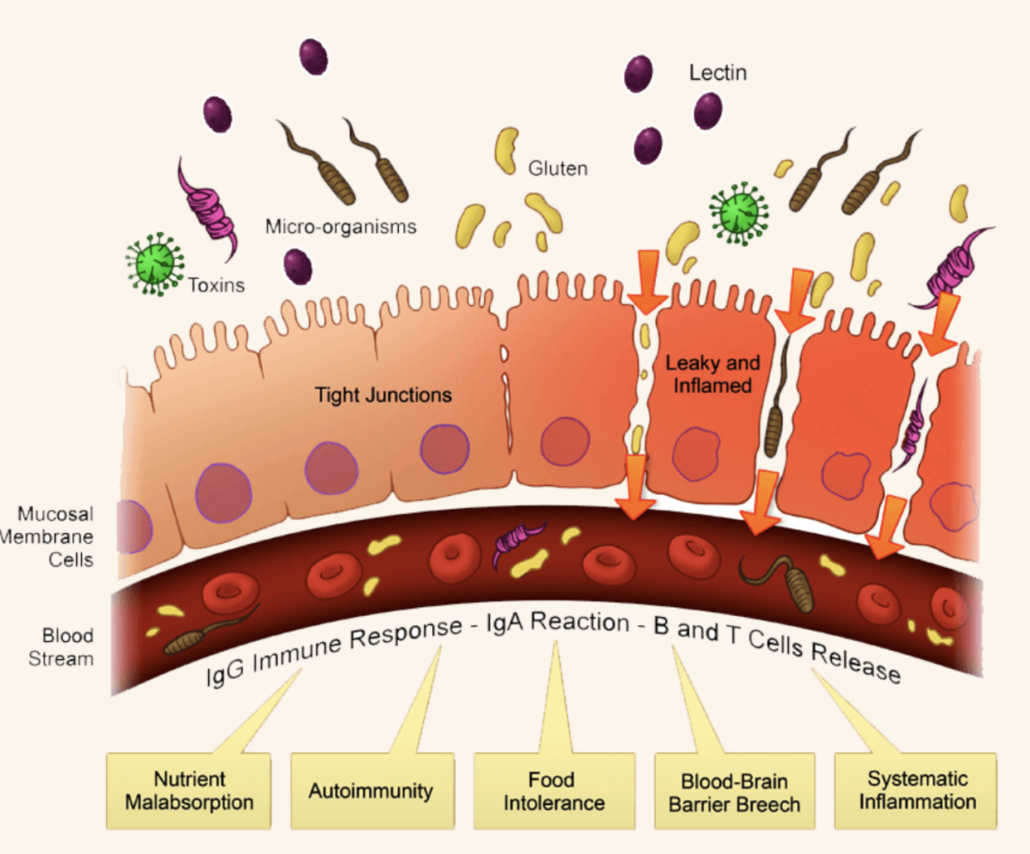
Another clinically studied issue with lectins in grains is that they bind to cells lining your gut.
When this binding occurs, lectins can disrupt intestinal flora growth, hormone signaling, and lead to intestinal permeability and its cascading effects.
If you already suffer from digestive issues like IBS and leaky gut you are more susceptible to the negative effects of lectins. You may even feel these toxic effects immediately.
Lectin binding to the intestinal lining they can damage the tight junctions between intestinal cells. Disrupting these junctions causes intestinal permeability leaky gut, a condition that has been associated with various autoimmune disorders [7] [8].
Damage from lectins to the gut can reduce your ability to absorb protein, fat, and vitamin B12, which increases your risk of inflammatory bowel disease.
Leaky gut is also implicated in numerous other disorders:
Intestinal | Extraintestinal |
Gastric ulcers | Allergies |
Infectious diarrhea | Infections (e.g., respiratory) |
Irritable bowel syndrome; functional gastrointestinal diseases | Acute inflammation (sepsis, systemic inflammatory response syndrome, multiple organ failure) |
Inflammatory bowel disease, Celiac disease | Chronic inflammation (e.g. arthritis) |
Cancer (esophagus, colorectal) | Obesity-associated metabolic diseases (nonalcoholic steatohepatitis, diabetes type I and II, cardiovascular disease) |
Gluten in Grains
Many grains are also high in gluten, including spelt, kamut, triticale, and all varieties of wheat, barley, and rye.
Gluten is actually a particularly harmful lectin that has been confirmed to have toxic effects on the intestinal walls.
Gluten toxicity is likely due to a protein called gliadin. Gliadin molecules carry antigenic sites–which means that your body experiences and responds to them as a threat.
In response to these toxic molecules your body responds by sending inflammatory cells. These inflame your gut lining. The microscopic hair-like structure lining your gut called the intestinal villi becomes flattened and compromised. This process leads to permeability in the gut.

Within 15 hours of consuming glutenous grains, bits of gliadin enter the bloodstream, thus spreading inflammatory damage to other body tissues.
By continuing to eat grains, you perpetuate this cycle where the gut becomes more susceptible to gluten intolerance, less able to absorb nutrients, and more likely to result in inflammatory autoimmune diseases.
Recent studies confirm that you don’t have to be diagnosed with Celiac disease to suffer these consequences of eating grains.
The Menace of Fiber in Grains
Most grains are high in fiber, and this is not a good thing.
The idea that eating fiber is a good way to move your poop along is, in fact, bullshit (though bullshit is actually a lot healthier than the bowel movement of humans consuming grains).
In a 2006 study aimed at identifying how fiber increases lubricating mucus, scientists found that fiber in foods “bang[s] up against the cells lining the gastrointestinal tract, rupturing their outer covering.” This rupturing “increases the level of lubricating mucus.”
To be clear, more mucus from rupturing your intestinal tract is NOT a good thing!
Studies show that as your fiber consumption goes up, so does your risk of developing diverticular diseases.
A 2007 study found that people who ate more fiber and had more bowel movements also had a higher likelihood of colon disease.5
As a 2012 study in the World Journal of Gastroenterology confirms, when it comes to constipation, “the previous strongly-held belief that the application of dietary fiber to help constipation is but a myth. Our study shows a very strong correlation between improving constipation and its associated symptoms after stopping dietary fiber intake.”
The study gathered data from people with chronic constipation and IBS. Contrary to popular belief, researchers found that eliminating fiber for only two weeks led to significant symptom reductions.
A six-month follow-up found that 41 of the study participants had chosen to stay fiber-free and reaped the benefits. While the 20 or so participants who returned to eating fiber all experienced a recurrence of IBS symptoms. 5
Another longitudinal study found that over eight years a recommended low-fat, high-fiber, high-fruit, and vegetable diet had zero effect when it came to preventing intestinal polyps.
Fiber can also act like an antinutrient by binding to and preventing the absorption of minerals like iron, zinc, magnesium, and calcium.
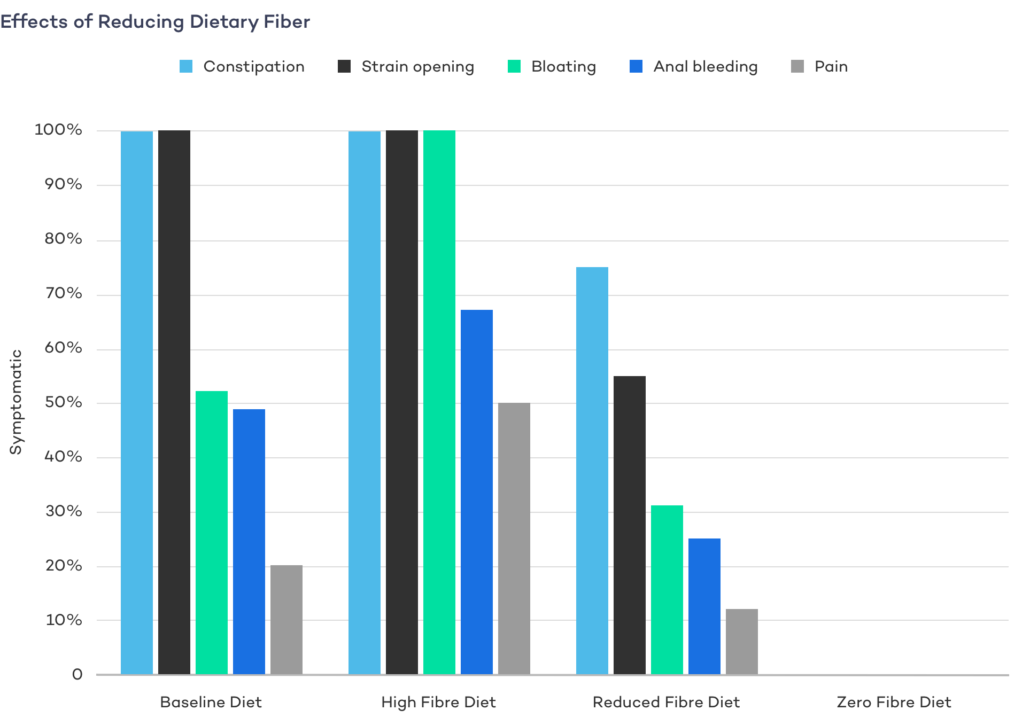
The foods and fiber we’re “supposed” to be eating in abundance create a constant slurry of inflammatory crap in our bowels. When I look at studies on the supposed benefits of fiber and vegetables, I am not surprised to find zero evidence demonstrating the benefits of fiber for bowel health.
My observations as a fertility doctor lead me to believe that carbs and fiber fermenting in our bowels spreads inflammation to tissue and organs throughout the entire lower abdominal region, including our tubes, ovaries, uterus, prostate, seminal vesicles, and testicles. In the majority of cases I treat, infertility is an inflammatory disease! Inflammation doesn’t stop in the lower abdomen. Destructive plant antigens in grains get deposited through the bloodstream to every organ in our bodies.
Animal Products are Much More Nutritious Than Grains

Grains often account for hollow calories devoid of vital bioavailable nutrients, including
- Zinc
- B vitamins
- Selenium
- vitamin A
You can only get these nutrients in appreciable quantities from animal foods. Not to mention that grains are a paltry source of healthy fats and complete proteins.
Here’s a head-to-head comparison of similar portions of ribeye steak and hot wholewheat cereal. 5
| NUTRIENT | Ribeye Steak (227g, 8oz) | Hot Whole Wheat Cereal ( 242g,1 cup) | |
| Calories | 560 | 150 | |
| Fat | 34g | 1g | |
| Saturated Fat | 12g | .1g | |
| Monounsaturated Fat | 12g | .1g | |
| Carbs | 0 | 33.2g | |
| Protein | 65g | 4.8g | |
| Vitamins | |||
| B1 (Thiamin) | 25% | 11% | |
| B2 (Riboflavin) | 23% | 7% | |
| B3 (Niacin) | 119% | 11% | |
| B5 (Pantothenic Acid) | 30% | – | |
| B6 | 100% | 9% | |
| B9 (Folate) | 7% | 8% | |
| B12 | 142% | – | |
| Vitamin D | 70% | – | |
| Vitamin E | 7% | 3% | |
| Choline | 70% | .5% | |
| Minerals | |||
| Magnesium | 12% | 13% | |
| Potassium | 14% | 5% | |
| Iron | 31% | 8% | |
| Copper | 33% | 10% | |
| Phosphorus | 42% | 17% | |
| Selenium | 131% | 44% | |
| Zinc | 111% | 8% |
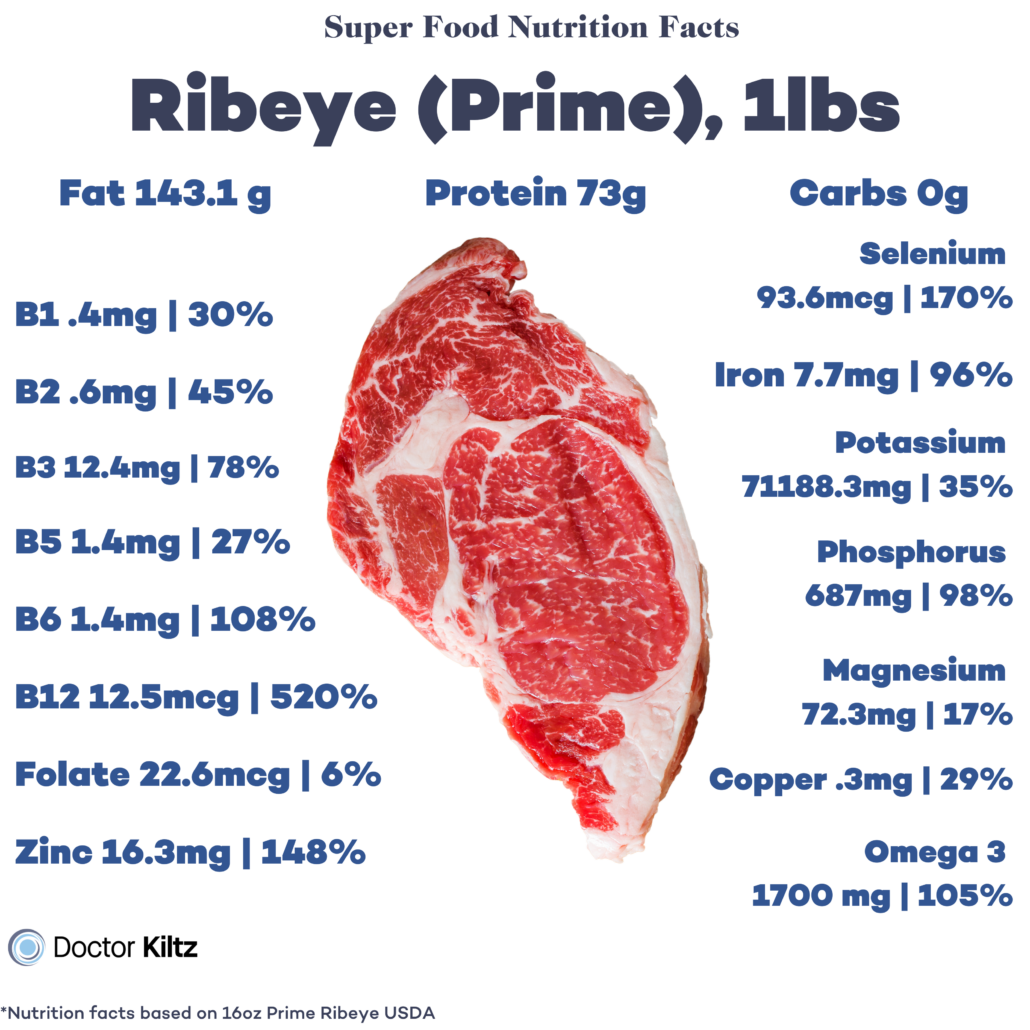
List of Grains to Avoid
All grains are potentially bad for you for one or a number of reasons. This list of grains to avoid demonstrates how all grains are very high in carbs, while most contain high levels of phytic acid along with moderate or high levels of lectins.6
| Type of Grain | Lectin Level | Phytic Acid Level | Carbs per 100g | Fiber |
| Wheat flour | Low | High | 76.2 g | .7 g |
| Wheat germ | High | High | 56 g | 17.1 g |
| Whole wheat flour | Moderate | High | 72.6 g | 12.2 g |
| Corn flour | High | High | 76.8 g | 7.3 g |
| Oatmeal | High | High | 68.2 g | 10 g |
| Spelt | High | High | 71.4 g | 10.7 g |
| Quinoa | High | High | 64.2 g | 7 g |
| Buckwheat | Moderate | Moderate | 71.5 g | 10 g |
| Barley flour | Moderate | High | 74.5 g | 10.1 g |
| White rice | Low | Low | 81.7 g | 2.8 g |
| Brown rice | Moderate | High | 77.2 g | 3.5 g |
Why are Grains Bad for You: The Bottom Line
Numerous lines of research suggest that grains are bad for you for various intrinsic reasons and when substituted for more nutrient-dense foods.
Grains are a recent addition to the human diet. As such, our digestive systems are not evolved to properly neutralize antinutrients in grains. These antinutrients inhibit the digestion of proteins and important nutrients like zinc and iron.
Additionally, grains are a very high-carb food. High-carb diets are associated with inflammation, heart disease, obesity, Alzheimer’s disease, heart disease, type-2 diabetes, and numerous other inflammatory and autoimmune diseases and disorders.
The bottom line is that there is, in fact, no reason to consume grains unless you are starving and have no other options.
Eliminating grains is one of the most impactful steps you can take on your journey to greater health and wellness.















